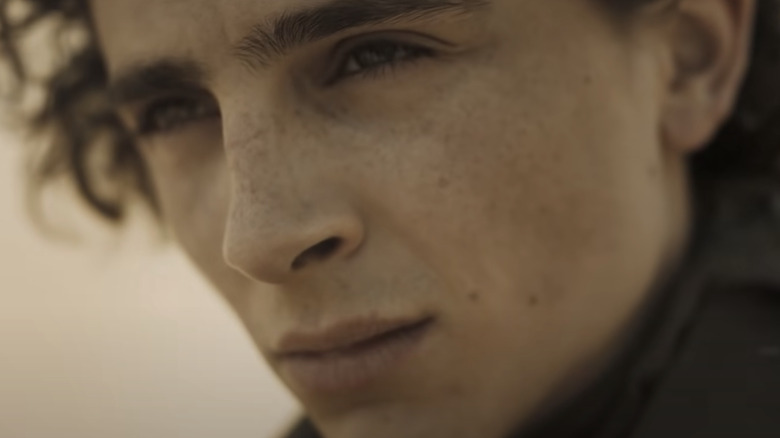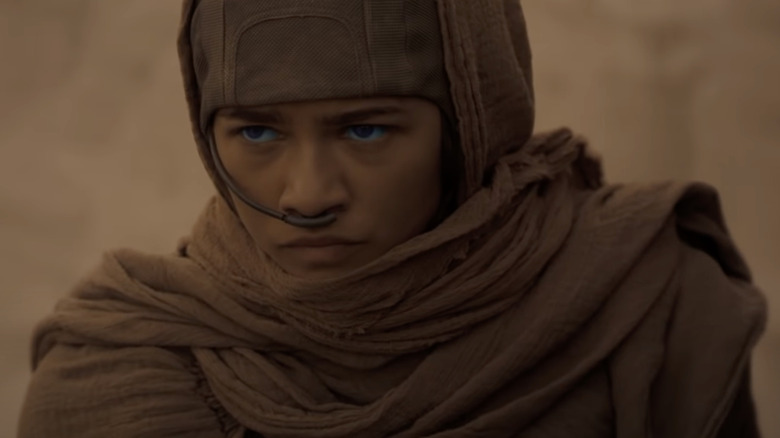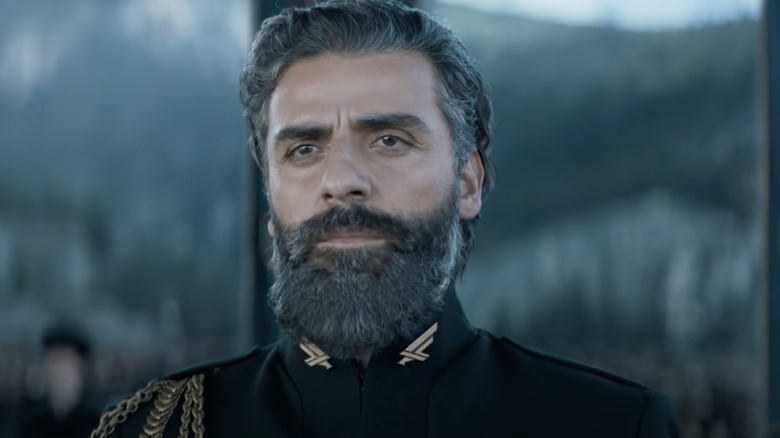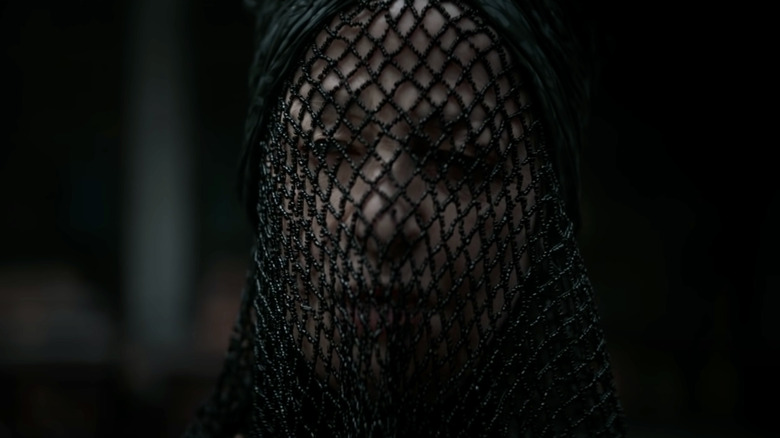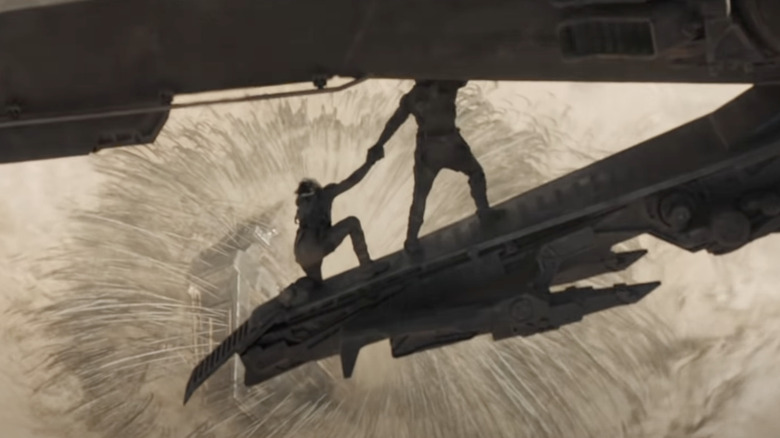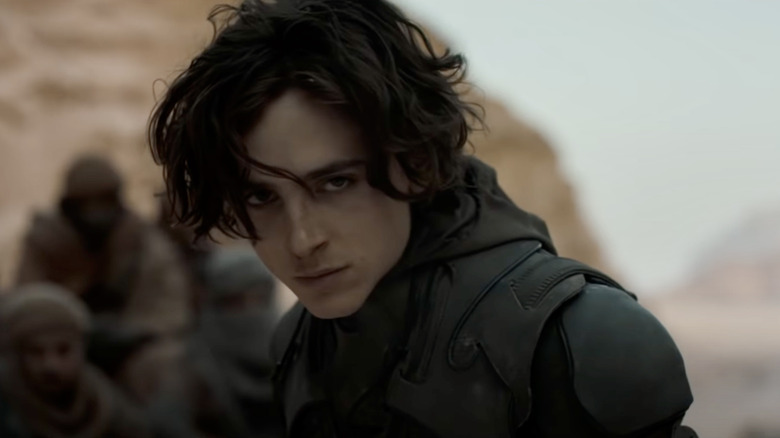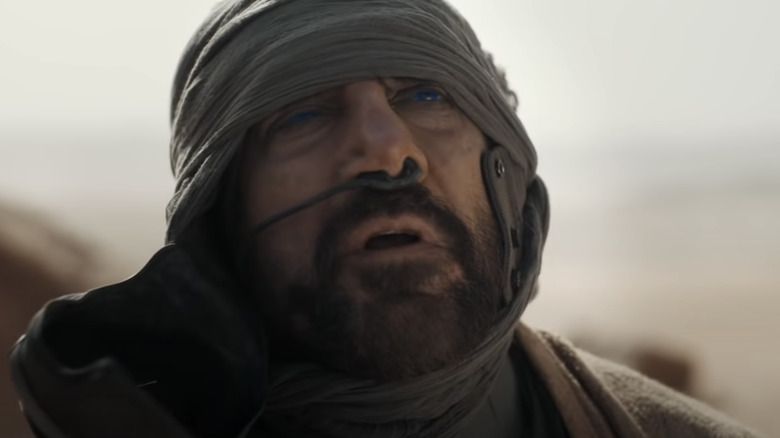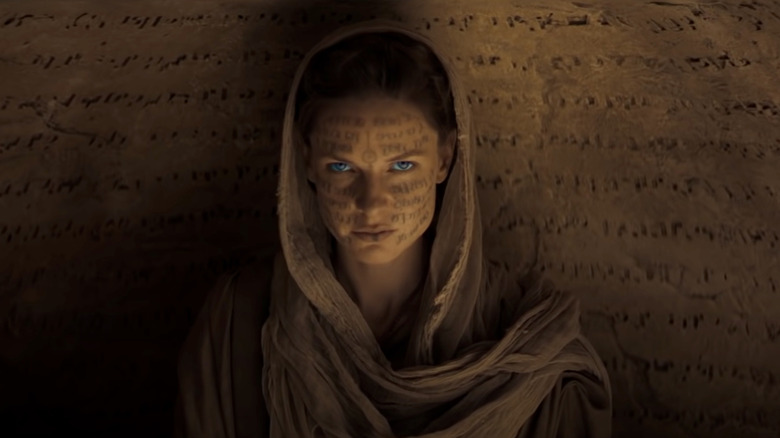Dune Book To Screen: Denis Villeneuve's Film Flows With The Spirit Of Frank Herbert
In the "Dune" mythos, there's a precedent for "filmbooks," training imprints left directly in a user's mind by means of mnemonic pulses. Frank Herbert's original 1965 novel left similar imprints in the minds of readers, who have been seeing "Dune" as a movie in their heads for over half a century now.
Various attempts have been made, down through the decades, at realizing Herbert's vision onscreen. These have left us with a documentary ("Jodorowsky's Dune"), an '80s film adaptation (David Lynch's "Dune"), and a TV miniseries (the Sci Fi Channel's "Dune.") Until Denis Villeneuve's "Dune," however, it felt like no one had ever really done the book justice.
Now, we have a version of "Dune" playing in theaters and on HBO Max that gives Herbert's novel the treatment it deserves as a widescreen science fiction epic. Brian Herbert, the author's son and current custodian of the "Dune" literary empire (with Kevin J. Anderson), has called Villeneuve's "Dune" the "definitive film adaptation." Villeneuve himself described his approach to adapting "Dune" in a roundtable interview with /Film and other outlets, where he said, "When you adapt, necessarily, you transform. The idea was to be as close to the spirit of the book as possible."
Film is primarily a visual medium that employs a different set of storytelling techniques than prose. Here, we'll take a look at some of the changes that Villeneuve, his co-screenwriters, Eric Roth and Jon Spaihts, and other collaborators made as they embarked on the massive undertaking of bringing "Dune" from the page to the screen.
Moviegoers and at-home viewers have had time now over opening weekend to see "Dune," while readers have had 50-plus years to consume Herbert's page-turner.
Spoilers for "Dune," both the film and the book, are fair game below.
A Different Intro
While rereading Herbert's novel before seeing "Dune," I found myself wondering how certain images from the movie's trailers were going to factor in, since they had no evident book corollaries. The novel begins on Caladan, the home world of House Atreides, with the arrival of the Reverend Mother Gaius Helen Mohiam. She peers in on the protagonist, Paul Atreides, as he is in bed, and he pretends to be asleep while watching her through the slits of his eyes.
Paul is only 15 years old in the book, so obviously they've aged him up by having a 25-year-old actor, Timothée Chalamet, play him in the movie. Here, Charlotte Rampling plays the Reverend Mother, though we never get a good look at her face because it's always hidden behind a black veil.
The book goes straight into Paul's gom jabbar test — whereby he must keep his hand in a box and subject it to agonizing pain or receive fatal poison — but the movie adds a fair amount of stage-setting beforehand. In voiceover, Zendaya's character, Chani, gives a brief history of the Harkonnen occupation of Arrakis, and we see how she and her people, the desert renegade Fremen, engage in guerrilla warfare: hiding themselves in the sand and then springing up from the ground, taking the outsiders on their planet by surprise.
Beast Rabban (Dave Bautista) presides over the ranks of Harkonnen soldiers and spice harvesters. The movie omits his brother, Feyd-Rautha. Rabban himself and Chani don't appear until the book's second half. Herbert parcels out the world-building aspects gradually in character's thoughts and dialogue, whereas Villeneuve is inclined to show such things up front to establish the enormous scale of the story he and his cast and crew are going to tell.
More of Caladan
Another invented movie scene that goes toward scale in "Dune" is the ceremony where Duke Leto (Oscar Isaac) welcomes spaceship ambassadors of the unseen Padishah Emperor so that he can officially accept Arrakis as his planetary fiefdom. Costume designers Bob Morgan and Jacqueline West referenced nuns, Maid Marian, and Russian tsars — the ill-fated Romanovs — to depict the "endangered nobles" of House Atreides on Caladan. Leto, Lady Jessica, and company stand in full ornamental regalia with lines of soldiers in dark coats behind them, and it feels like something out of "Cleopatra" or some such sweeping epic with a cast of thousands.
Paul's training scene with Gurney Halleck (Josh Brolin) rings true to the novel, with them exercising their rapier wit and actual rapiers and energy shields, all while Halleck scolds Paul for having his back to the door and not being "in the mood" to spar. Brolin and Bautista both get a bit shouty in the early moments, but it's Ferguson who displays more genuine emotion as she gives an intense recitation of the Litany Against Fear outside the room where Paul is undergoing his gom jabbar test. "Fear is the mind-killer ..." she whispers in a prayer-like chant.
Paul dreams of Chani in impressionistic images, and he sees portents of Duncan Idaho's death. For me, Idaho was more of a phantom character in the novel; though often spoken of, the valiant, cape-wearing swordsman didn't register as much outside the one scene where he's drunk on spice wine (which didn't make it into the movie).
Jason Momoa helps beef up Idaho's presence both literally and figuratively, letting him buddy around with the muscleless Paul in the spacecraft hangar before he leaves for Arrakis. Paul also gets a new moment with Leto, his father, walk-and-talking through the Atreides family graveyard.
Less Court Intrigue
When you get past the "Dune" lingo — all that space babble explained in the "Terminology of the Imperium" glossary — part of what makes Herbert's novel such a ripping good yarn right from the get-go is the court intrigue that characterizes the first third of it ("Book One: Dune"). It's "Game of Thrones" stuff before there was ever "Game of Thrones."
Herbert gives us a window into the mind of different characters so that we can see their conflicting viewpoints. The reader knows, for instance, that Dr. Yueh (Chang Chen) is going to betray Duke Leto before he ever does it. He's a well-established presence, not just some random background character.
This imbues "Book One" with an almost Hitchcockian, bomb-under-the-table-type tension. Leto seems doomed straightaway, but the suspense is drawn out as we wait for it to happen. There's also a whole subplot where the Mentat, Thufir Hawat (Stephen McKinley Henderson, who shows us the whites of his eyes as he processes data), mistakenly believes that Lady Jessica is the traitor. This pits them against each other and eventually causes Hawat to defect to House Harkonnen after Leto's death.
The movie, by its nature, can't give every character a long voiceover explaining their thoughts, so it loses some of the depth and intrigue of these moments, or at least asks the viewer to see the hidden depth as it presents the tip of the iceberg. This is something Villeneuve touched on at the roundtable when he talked about making the characters' inner lives cinematic.
Hawat isn't as fleshed out, and after things go to hell in a handbasket for House Atreides, he just sort of drops out of the film. Presumably, they could be saving more of his story for "Dune Part Two."
Messages from the Deep
Villeneuve's film reorders some book scenes and abbreviates or breezes past others, but it still has its share of moments faithfully reproduced. The Shadout Mapes (Golda Rosheuvel) has less to do beyond gifting her usual concealed chrysknife and turning up dead later. We walk around in the world outside the palace, where a familiar line of 20 sacred palm trees drinks the water of a hundred men. Ornithopters take flight like dragonflies and murals depict the gigantic sandworms even before an emergency takeoff leaves Paul looking down the mouth of one.
The sandworm's toothy maw swallows an abandoned spice load, and it's best viewed in the light, as opposed to later when it rises out of the desert in darkness and sends Paul and Lady Jessica running for the rocks. Before that, we learn the merits of sand-walking and spitting and how to wear a stillsuit, with it recycling the body's water. Shedding a tear for someone means giving moisture to the dead.
Details like these, compressed within 156 minutes yet compounded with cinematographer Greig Fraser's visuals, form an immersive composite of Arrakis. Duncan Idaho flies to the rescue and the scene where he makes his last stand with the doors closing on him lifts straight from the mind's-eye.
One uniquely cinematic flourish is the cross-cutting that Villeneuve does as Leto delivers his poison goodbye and Paul finds his ducal ring, thereby confirming his father is dead. Through it all, Paul's prescient "memory of the future in the past," as the book puts it, speaks to him in sideways flashes, showing us possible outcomes or dream symbols, which could be confused for garden-variety flash forwards.
"Dreams are messages from the deep," and, "When you take a life, you take your own."
White Savior Issues
"Dune" has long been critiqued as a white savior narrative, even though Paul, the messianic Muad'dib, winds up sweeping the cosmos in a bloody jihad (the movie calls it a crusade or holy war in an effort to partly distance itself from cultural appropriation). It doesn't help that Villeneuve's film climaxes with a white boy killing a Black man.
The Fremen Jamis (Babs Olusanmokun) challenges the desert mouse, our little Lawrence of Arabia, Paul, to a duel to the death. This rite of passage proves to be the jumping-off point for "Dune Part Two." Now christened a killer, Paul and his new tribe wander into the desert, where he sees a Fremen riding a sandworm while Chani promises, "This is only the beginning."
It feels like the only way "Dune" could have gotten around the white savior issue would be if it had cast a person of color as Paul. As it is, from an acting standpoint, divorced of race, Chalamet does a fine job embodying Paul, with his role in Netflix's "The King" having groomed him in 2019 to play young royalty of the Atreides type. Meanwhile, even with a gender-flipped Dr. Kynes and an overall cast that puts more diversity on display (with Black and Guatemalan-American actors filling prominent roles), "Dune" has still taken flak for being Arab-coded.
Arrakis is a fictional future planet, not the Middle East, yet spice or melange — without which space travel is impossible — is a clear substitute for oil. Herbert based the Fremen on the Bedouin nomads of the Arabian Peninsula and the San People of South Africa (not to be confused with the Sand People of Tatooine, though you could certainly make a case that the Fremen inspired those highly territorial "Star Wars" aliens).
Questions of Representation
The sticking point for some commentators with "Dune" is the lack of MENA (Middle Eastern or North African) representation among the principal cast. It's worth noting that, in the book, the picture of Paul's father is that of an individual who is "olive-skinned," so there's some question as to his racial descent or if such earthbound concepts should even apply to people on other planets.
Herbert writes that Duke Leto had "dark skin," which made Lady Jessica "think of olive groves and golden sun on blue waters." What's more, the Bene Gesserit have sown "implant-legends," preparing the way for Paul by "seeding the known universe with a prophecy pattern."
If Paul is to be regarded as a savior, then his rise is ordained by a self-fulfilling prophecy, not kismet. No doubt, that statement could apply equally to movie casting. To the Fremen, Paul is a savior; to the remaining interstellar population, he's destined to be an Antichrist.
Villeneuve already interrogated the Chosen One narrative in "Blade Runner 2049," which positioned its protagonist as more of a Chosen Wannabe. "Dune" goes the other way, laying the groundwork for what could be its own subversive cult figure: Paul, the dangerous "Dune Messiah," as the title of Herbert's follow-up book identifies him.
"Blade Runner" always had a heavy streak of Orientalism running through it, and if "Dune" wanted to untether itself from that, it does itself no favors by making its highest-profile East Asian face a betrayer — with no foreshadowing, as we've established. Elsewhere, the aforementioned Dr. Kynes (Sharon Duncan-Brewster), who was a man in the novel, has become a Black woman. As cool as it is to see her summoning a sandworm, she, too, gets dispatched, same as Dr. Yueh and other non-white characters.
Flow with the Process
Ultimately, the casting for "Dune" was similar to the damned-if-you-do-or-don't predicament that Marvel Studios faced when bringing to life the Ancient One in "Doctor Strange." If Marvel went with an Asian actor, they might have been accused of dealing in stereotypes. When they went with a white actress, they were accused of whitewashing.
So it goes with "Dune." In Herbert's novel, Baron Harkonnen (Stellan Skarsgaard) has boys drugged and sent to his bedchamber. In the movie, he's portrayed as a grotesquely obese mud monster. Does this mean the story is somehow homophobic or fat-shaming?
Maybe it's necessary to ask such questions in today's sensitive climate. Maybe someone somewhere is always going to be offended. Maybe art just draws from life and novelists and filmmakers should be afforded the freedom to blend inspirations.
Case in point: Hans Zimmer's musical score for "Dune," which contains flourishes of everything from Scottish bagpipes to Tuvan throat singing to the dubstep background whisperings of Electro's inner voices, which Zimmer tested on "The Amazing Spider-Man 2" soundtrack.
If nothing else, it's guaranteed that the "Dune" think pieces will continue to flow. Whatever else it is, Villeneuve's film is a transportive epic that achieves a grandness of scope we've seldom seen in the sci-fi movie arena.
When Paul and his mother fly an ornithopter into a sandstorm, his visions of Jamis help him realize that he must "flow with the process." He turns off the engine and lets the sandstorm winds guide him, not unlike Luke Skywalker, turning off the targeting computer in his X-Wing as he hears Obi-Wan's voice telling him, "Use the Force." Rather than offer a literal translation of Herbert, "Dune" the movie eyeballs his spirit and asks viewers for the same fluidity that readers have allowed the book.
